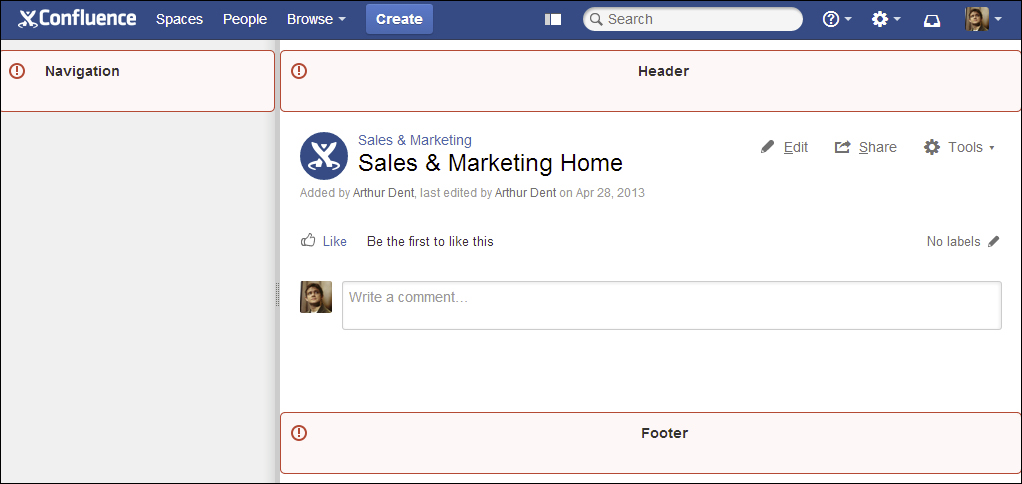Themes are sets of predefined styles and can be used to personalize the look and feel of Confluence. Themes can be applied to the entire site and individual spaces. Some themes add extra functionality to Confluence or change the layout significantly.
Confluence 5 comes with two themes installed, and an administrator can install new themes as add-ons via the Administration Console. We go into add-ons and the Atlassian Marketplace in Chapter 9, General Administration.
To change the global Confluence theme, perform the following steps:
- Browse to the Administration console (Administration | Confluence Admin).
- Select Themes from the left-hand side menu.
- All the installed themes will be present.
Select the appropriate radio button to select a theme.
- Choose Confirm to change the theme:
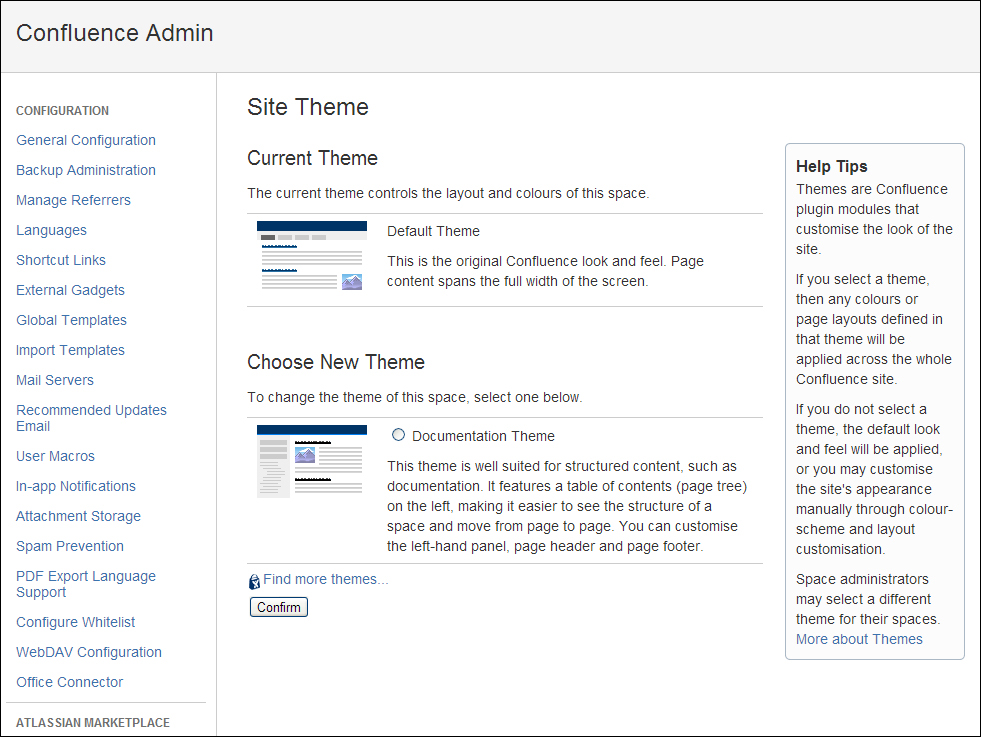
Space administrators can also decide on a different theme for their own spaces. Spaces with their own theme selections—and therefore not using the global look and feel—won't be affected if a Confluence Administrator changes the global default theme.
To change a space theme, perform the following steps:
- Go to any page in the space.
- Select Space Tools in the sidebar. (If you are not using the default theme, select Browse | Space Admin.)
- Select Look and Feel, followed by Theme.
- Select the theme you want to apply to the space.
- Click on Confirm.
As the name implies, this is the default theme shipped with Confluence. This Default Theme got a complete overhaul in Confluence 5 and looks as shown in the following screenshot:
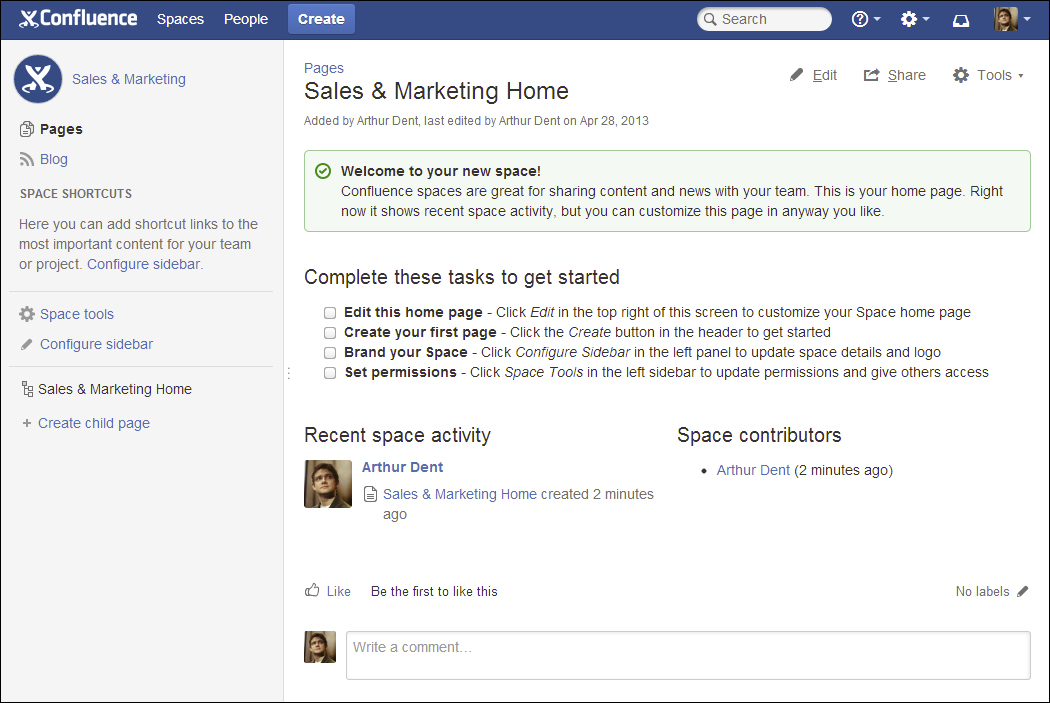
The Default Theme provides every space with a sidebar, containing useful links and navigation help throughout the current space. With the sidebar, you can quickly change from browsing pages to blog post or vice versa. The sidebar also allows important space content to be added as a link for quicker access, and displays the children of the current page for easy navigation.
The default theme doesn't have any global configuration available, but a space administrator can make some space-specific changes to the theme's sidebar.
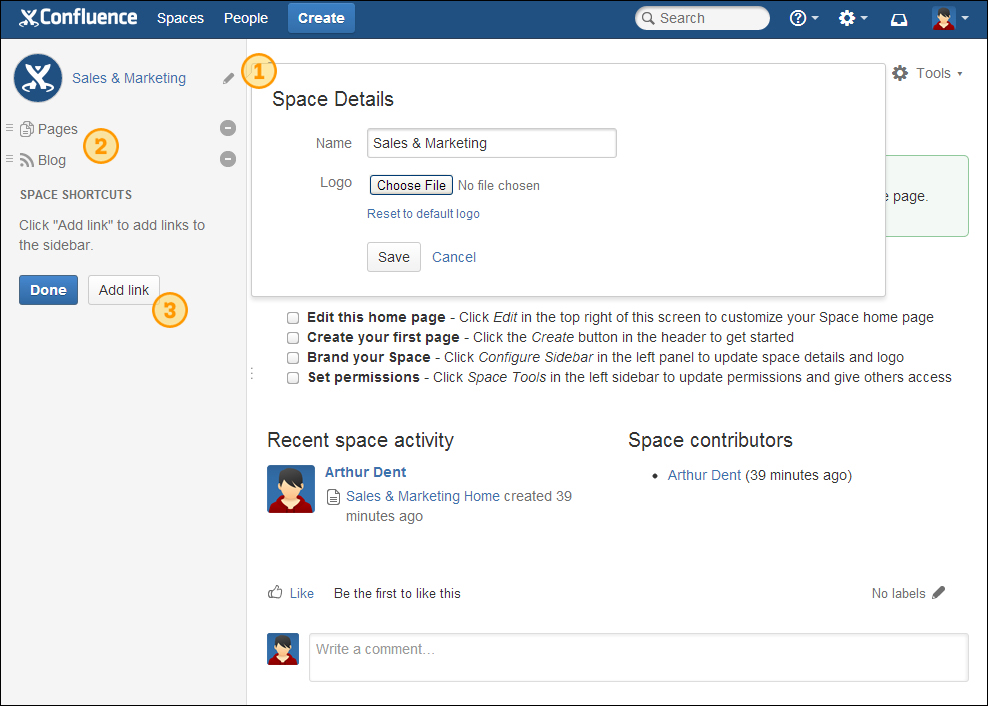
Perform the following steps to change the space details:
- Go to any page in the relevant space.
- Select Configure sidebar in the space sidebar.
- Click on the edit icon next to the space title.
- A pop up will show where you can change the space title and logo (as shown in the preceding screenshot, indicated as 1).
- Click on Save to save the changes
- Click on the Done button to exit the configuration mode.
The main navigation items on the sidebar (pages and blog posts) can be hidden. This can come in handy, for example, when you don't allow users to add blog posts to the space.
To show or hide the main navigation items, perform the following steps:
- Go to any page in the relevant space.
- Select Configure sidebar in the space sidebar.
- Select the - or + icon beside the link to either hide or show the link.
- Click on the Done button to exit the configuration mode.
Space shortcuts are manually added links to the sidebar, linking to important content within the space. A space administrator can manage these links.
To add a space shortcut, perform the following steps:
- Go to any page in the relevant space.
- Select Configure sidebar in the space sidebar.
- Click on the Add Link button, indicated as 3 in the preceding screenshot.
- The Insert Link dialog will appear.
- Search and select the page you want to link.
- Click on Insert to add the link to the sidebar.
- Click on the Done button to exit the configuration mode.
The Documentation Theme is another bundled theme. It supplies a built-in table of content for your space, a configurable header and footer, and a space-restricted search.
The Documentation Theme's default look and feel is displayed in the following screenshot:
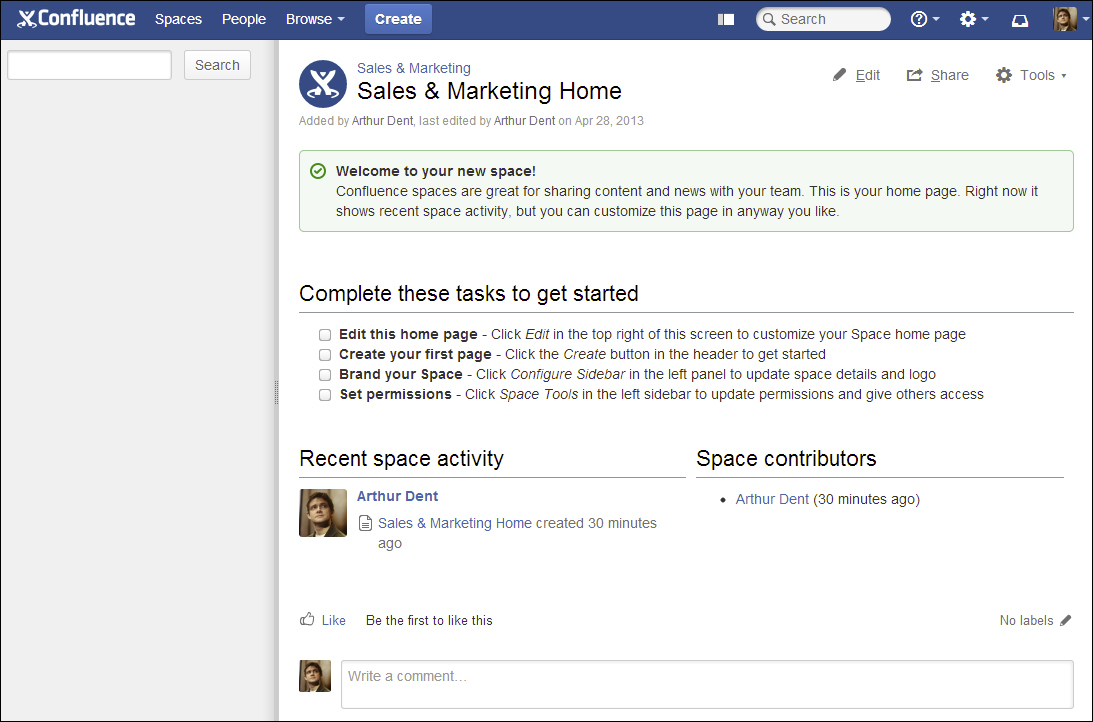
The sidebar of the Documentation Theme will show a tree with all the pages in your space. Clicking on the icon in front of a page title will expand the branch and show its children.
The Documentation Theme allows configuration of the sidebar contents, page header and footer, and the possibility to restrict the search to only the current space.
A Confluence Administrator can configure the theme globally, but a Space Administrator can overwrite this configuration for his or her own space. To configure the Documentation Theme for a space, the Space Administrator should explicitly select the Documentation Theme as the space theme.
The theme configuration of the Documentation Theme allows you to change the properties displayed in the following screenshot. How to get to this screen and what the properties represent will be explained next.
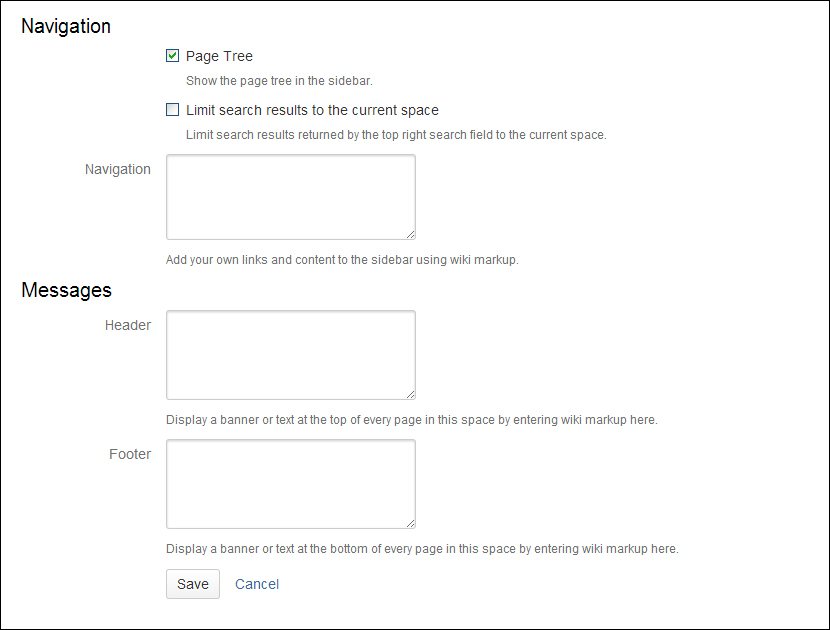
To configure the Documentation theme, perform the following steps:
- As a Confluence Administrator:
- As a Space administrator:
- Go to any page in the space.
- Select Browse | Space Admin.
- Choose Themes from the left-hand side menu.
- Make sure that the Documentation Theme is the current theme.
- Click on the Configure theme link.
- Select or deselect the Page Tree checkbox. This will determine if your space will display the default search box and page tree in the sidebar.
- Select or deselect the Limit search
results to the current space checkbox.
- If you select the checkbox:
The Confluence search in the top-left corner will only search in the current space.
The sidebar will not contain a search box.
- If you deselect the checkbox:
The Confluence search in the top-left corner will search across the entire Confluence site.
The sidebar will contain a search box, which is limited to searching in the current space.
- If you select the checkbox:
- In the three textboxes, you can enter any text or wiki markup you would like; for example, you could add some information to the sidebar or a notification to every page. The following screenshot will display these areas:
- Navigation: This will be displayed in the space sidebar.
- Header: This will be displayed above the title on all the pages in the space.
- Footer: This will be displayed after the comments on all the pages in the space.
